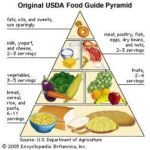Food waste is a pervasive global challenge, impacting economies, environments, and societies worldwide. Understanding the specific areas where this issue is most prominent, and the reasons behind it, is crucial for developing effective solutions. This article explores the food supply chain, highlighting key stages and locations where food waste is a significant problem.
Farms: The Beginning of the Waste Stream
Food loss frequently initiates right at the production level. Economic factors often play a significant role; depressed market prices and expensive harvesting can render it financially unviable for farmers to collect their entire yield. The pursuit of perfection also contributes to waste, as strict cosmetic standards frequently lead to the rejection of produce with slight imperfections. Labor shortages add another layer of complexity. While initiatives like gleaning and farm-to-food-bank programs attempt to recover unharvested crops, a considerable proportion still ends up being left in the fields, only to be tilled back into the soil.
Manufacturers: Inefficiencies in Processing
A substantial 90% of surplus food within the processing sector stems from byproducts—those elements like peels, stems, and bones not incorporated into the final product—along with waste generated during production line operations. Surprisingly, many of these discarded trimmings, such as potato peels from french fry production lines, are still fit for consumption. Product diversity can also cause challenges; each changeover of a production line requires complete emptying and cleaning. The COVID-19 pandemic highlighted the difficulties in adjusting to changing demands. For example, manufacturers struggled to shift from producing large milk containers for industrial clients to smaller sizes for consumers staying at home.
Retailers: The Pressure of Customer Expectations
The demand for diverse and high-quality food readily available in retail settings puts a strain on inventory management and food purchasing practices. Adapting stocking procedures or product sizes can be difficult, especially when deeply ingrained in a retailer’s brand identity. Heightened customer expectations concerning freshness contribute significantly to waste. Safe, edible food is often discarded due to the perception that it’s past its prime, with date label concerns accounting for roughly 50% of food waste during the retail phase.
Foodservice: Balancing Speed and Minimizing Leftovers
Similar to retailers, the foodservice sector faces customer expectations for readily available, high-quality food. In fast-food restaurants and similar businesses, speed is also paramount. Inaccurate forecasting, bulk purchasing, and improper storage contribute to waste. Preparation methods that leave behind usable food also play a role. The most substantial contributor to waste at the foodservice level, a whopping 70%, comes from plate waste—food left uneaten by customers (whether served directly or taken from a buffet).
Homes: The Impact of Consumer Behavior
Ineffective food management practices lead to spoilage and drive food waste within households. Many purchases are unplanned, leading to overbuying. Consumers often succumb to the temptation of bulk purchases, even when they know they won’t consume everything before it spoils. A lack of knowledge regarding ingredient repurposing and proper food storage contributes significantly. Misunderstandings surrounding date labels frequently result in the premature disposal of food. Limited access to municipal food waste recycling programs and perceived barriers to home composting further compound the problem.
Addressing the Problem: A Multi-pronged Approach
Reducing food waste requires a collaborative, multi-faceted approach involving producers, manufacturers, retailers, the foodservice industry, and consumers. This includes improving harvesting techniques, optimizing production processes, refining inventory management, educating consumers about proper food storage and date labels, and expanding access to food waste recycling and composting programs. By addressing these issues at each stage of the food supply chain, we can significantly reduce food waste and move towards a more sustainable and equitable food system.
